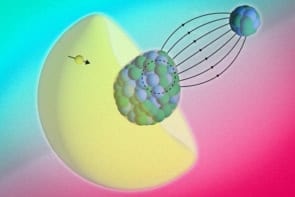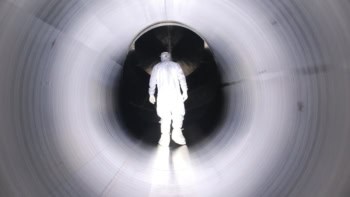The tiniest engineering detail can make the difference between winning and losing in the multi-million pound sport of Formula One - as Ferrari almost found to their cost last week. Eddie Irvine was disqualified and then reinstated from the Malaysian Grand Prix after it was discovered that a side panel on his car was a few millimetres too narrow. To try and improve the performance of their cars Benetton - the motor racing team - has got together with scientists and engineers from the nuclear industry. Irvine leads the driver's championship with only this weekend's grand prix in Japan remaining.
Benetton recently signed a two-year partnership with AEA Technology, the UK science and engineering services firm. They believe that AEA’s knowledge of materials will make their cars lighter and faster. Pat Symonds, technical director of Benetton Formula One, says that the deal will “enable us to apply technologies far in advance of anything that we could achieve alone”. In return AEA will get the chance to prove that their products are robust enough to withstand the harsh environment of a Formula One car. They should then be able to sell these products to other racing teams and, perhaps eventually, to other motor manufacturers. AEA’s technologies may then find their way into ordinary cars.
AEA Technology was spun off from the UK Atomic Energy Authority in 1996. It now operates in the oil, gas, defence, rail, pharmaceutical and processing and manufacturing industries, but the nuclear industry remains its biggest market. A spokesman for AEA says that the company’s experience in the nuclear industry, and consequent expertise in materials science, puts it in a prime position to move into the world of Formula One. “Our understanding, particularly of carbon composite materials and the way that materials bond together, are particularly relevant to the motor racing industry where materials used need to be both tough and light,” he says.
AEA engineer Roger Davidson says that his company is not working on fundamental science with Benetton but rather applying knowledge of materials and processes to the demands of the race circuit. Engineers who previously carried out research into the materials used in nuclear reactors have since turned their talents to developing advanced coatings that protect the driver from intense heat, as well as designing lightweight components made from carbon composites. They also work on ways to reduce the friction between car and circuit, carry out computer modelling and develop engines.
Alliances between the high-tech and motor racing worlds are not uncommon. Indeed, AEA have worked for most of the Formula One teams, as well as many rally and touring car teams. They have treated motorcycle suspensions, produced software that assesses the durability of vehicle components, and have developed technology that removes carbon particulates from diesel exhausts. They now hope that their experience in the nuclear industry will help Benetton to pass the chequered flag ahead of the competition.



